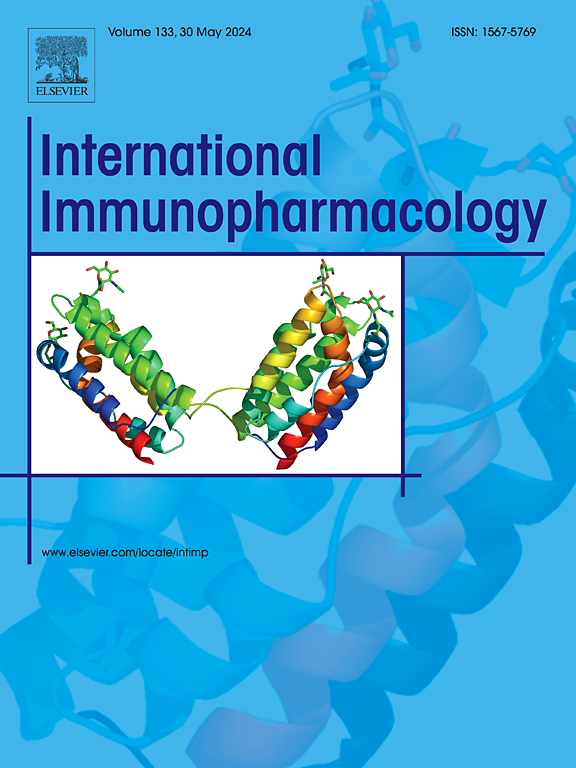Metformin-mediated protection against Immunosenescence in diabetic cardiomyopathy: The potential roles of GDF-15 and klotho proteins
IF 4.8
2区 医学
Q2 IMMUNOLOGY
引用次数: 0
Abstract
Diabetic cardiomyopathy (DCM) is a global health concern. However, studies examining the effect of metformin on diabetes-induced cardiac myocyte aging are lacking. This study aimed to investigate the protective effect of metformin against DCM involving modulation of macrophage phenotypes, growth differentiation factor-15 (GDF-15), and the anti-aging protein Klotho. Diabetes was induced in male Wistar rats using streptozotocin. Diabetic and nondiabetic rats were treated with metformin (200 mg/kg/day) and saline (control). DCM, inflammation, adhesion molecules, immunometabolic, and GDF-15 biomarkers were assessed using immunoassays. Western blotting was used to analyze Klotho expression. Macrophage phenotypes, senescence-associated-galactosidase (SA-β-gal), and p16INK4a were examined using immunohistochemistry, whereas the heart sections were histologically examined. The untreated diabetic rats showed increased serum troponin I and creatine kinase-MB levels, reflecting cardiac damage, which was confirmed via morphological changes and senescence. Klotho expression was decreased, indicating cardiac aging. Treatment with metformin reduced the heart weight-body weight ratio and lowered cardiac injury, inflammation, and adhesion molecule biomarker levels. It also reversed the histopathological changes induced by diabetes. It shifted macrophage polarization toward the M2 phenotype, decreased p16INK4a and SA-β-gal expression, and enhanced Klotho and GDF-15 expression. These findings revealed that diabetes induces cardiac aging by increasing senescence markers and decreasing the expression of Klotho. Metformin treatment protects against DCM by modulating macrophage phenotypes, attenuating immunosenescence-related dysregulation, and enhancing GDF-15 and Klotho expressions. Thus, metformin has potential clinical implications in alleviating DCM.

求助全文
约1分钟内获得全文
求助全文
来源期刊
CiteScore
8.40
自引率
3.60%
发文量
935
审稿时长
53 days
期刊介绍:
International Immunopharmacology is the primary vehicle for the publication of original research papers pertinent to the overlapping areas of immunology, pharmacology, cytokine biology, immunotherapy, immunopathology and immunotoxicology. Review articles that encompass these subjects are also welcome.
The subject material appropriate for submission includes:
• Clinical studies employing immunotherapy of any type including the use of: bacterial and chemical agents; thymic hormones, interferon, lymphokines, etc., in transplantation and diseases such as cancer, immunodeficiency, chronic infection and allergic, inflammatory or autoimmune disorders.
• Studies on the mechanisms of action of these agents for specific parameters of immune competence as well as the overall clinical state.
• Pre-clinical animal studies and in vitro studies on mechanisms of action with immunopotentiators, immunomodulators, immunoadjuvants and other pharmacological agents active on cells participating in immune or allergic responses.
• Pharmacological compounds, microbial products and toxicological agents that affect the lymphoid system, and their mechanisms of action.
• Agents that activate genes or modify transcription and translation within the immune response.
• Substances activated, generated, or released through immunologic or related pathways that are pharmacologically active.
• Production, function and regulation of cytokines and their receptors.
• Classical pharmacological studies on the effects of chemokines and bioactive factors released during immunological reactions.

 求助内容:
求助内容: 应助结果提醒方式:
应助结果提醒方式:


